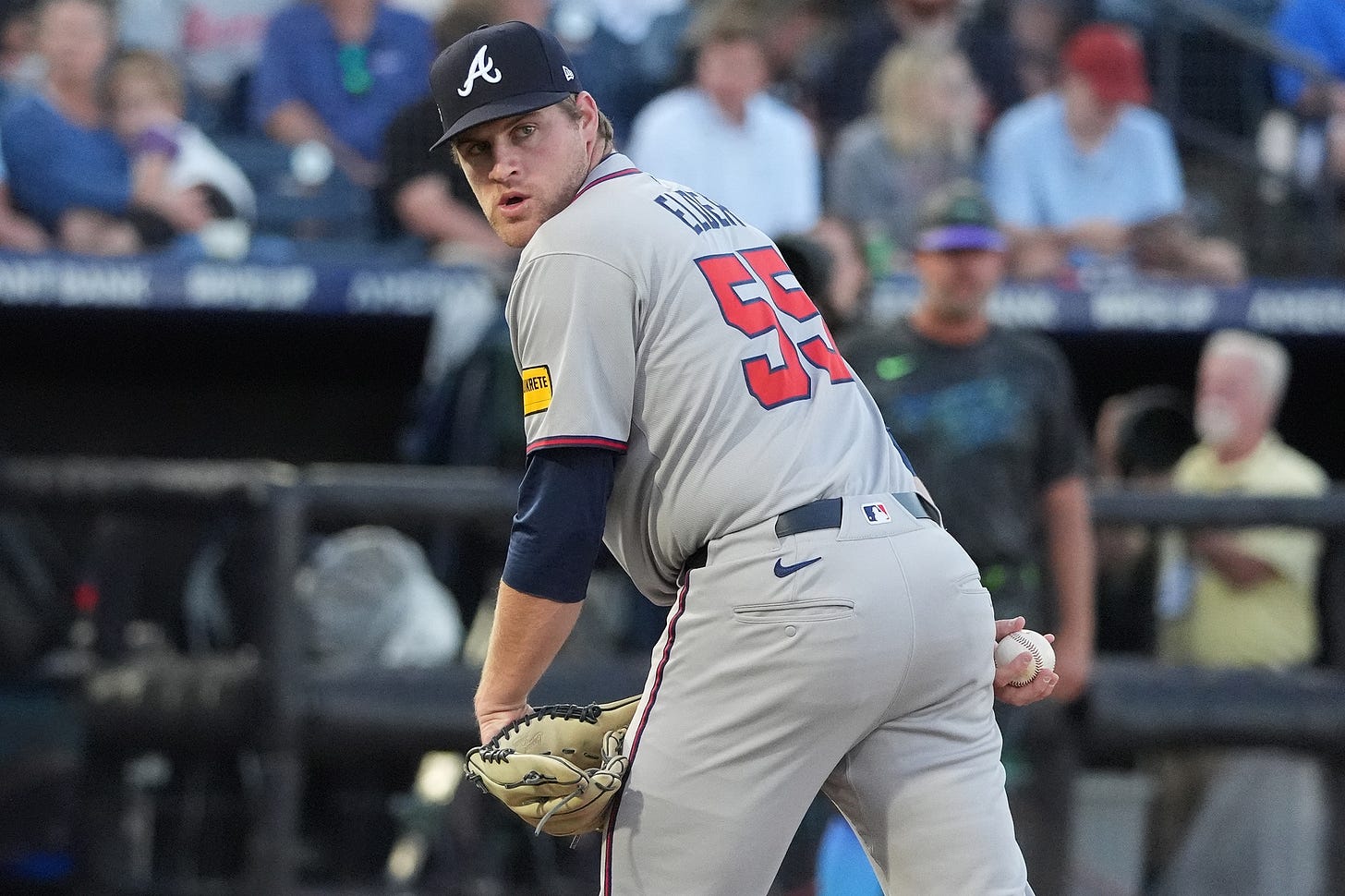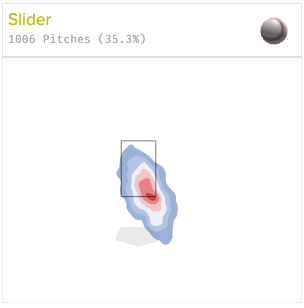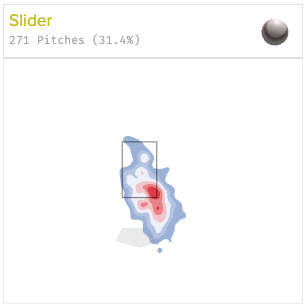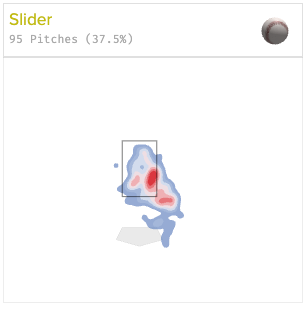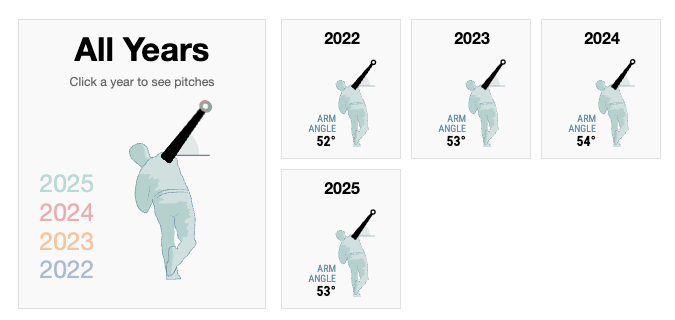What to do about Bryce Elder
Bryce Elder's in that nebulous place where he's too good to completely give up on, but too inconsistent to rely on right now. How does Atlanta fix him?
I was emailing recently with one of our very first paid subscribers, Andrew, when he dropped this bar on me:
“Wouldn't it be the Bravesy (sic) thing that Elder ends up holding the keys to the postseason for the Braves?”
It’s possible, and here’s why:
Starter innings are the absolute hardest thing to find in MLB, and Bryce Elder can give them to you.
I’ve noticed that there’s a subset of fans that get frustrated whenever I discuss converting a reliever to a starter - “Why can’t he just stay in the bullpen? Why do we need to make him into a starter?”
Because 135 innings of a 3.00 ERA out of the rotation is significantly more valuable than 60 innings of a 2.00 ERA out of the bullpen, both on a WAR basis and a “return on investment” basis.
And while Bryce Elder absolutely does not have an ERA of 3.00 right now, the potential to get back to that 2023 All-Star form is why Atlanta keeps running him out there.
Let’s talk about it.
An All-Star in 2023
Elder’s All-Star nod in 2023 comes up a lot when we talk about the sinkerballer - I’ve been told it was one of the reasons cited to AJ Smith-Shawver when the team explained they were sending him, not Bryce, down to Gwinnett last week.
And while his conventional statistics were nice - a 7-1 record and a 2.45 ERA across seventeen starts leading up to the All-Star Break - there’s a bit of an overperformance on the inputs that we need to acknowledge. Across that same span, his Fielding Independent Pitching was 3.76, so he was getting better results on the things that he could not control than what the ‘average’ starter would get.
(Fielding Independent Pitching looks at just things that are directly controlled by the pitcher - strikeouts, walks, and home runs, while everything else is stripped away. It’s not perfect, but it does completely take away the good or bad impact of the defense…which is a bit flawed when you’re evaluating a ground ball pitcher, if you ask me, but it’s what we have to work with.)
Things spiraled rather quickly for Elder, however. His final start before the All-Star Break was an absolute obliteration at the hands of the Tampa Bay Rays - seven runs on six hits in just 3.1 innings, with Elder walking four and not recording a single strikeout. He didn’t fare any better in his first start out of the break, either, with Arizona tagging him for seven runs (five earned) in just 2.2 innings.
While he had his moments down the stretch - seven innings against Milwaukee with only one run and no walks in late July, or seven scoreless against the Yankees in mid-August - for the most part, Elder floundered under the largest workload of his career. Elder finished the back half of the schedule with a 5.75 ERA across 14 starts, allowing 11 homers and walking 33 in his 72 innings post-break.
This time, he was underperforming his inputs, with a FIP of 5.37 but an ERA almost 4/10ths of a run higher. He finished with a 3.81 ERA on a career-high 174.2 MLB innings (plus another six in Gwinnett, 11.2 in spring, and 2.2 in the postseason). Snit alluded to the workload playing a role at the 2023 Winter Meetings, explaining that Elder’s learned a lot from his experience of fighting through the workload in a way that only Snit could.
“Going ‘tee to green’, they don’t know (how tough it is) until they do it and make those starts. I guarantee you, his preparation this winter will be different than the winters before because he knows what he’s in for.”
And while we don’t know what Elder specifically did over that winter to get ready for another 170+ inning workload, we know what some of the side effects of that training did to his stuff.
Subscription break! We’re adding more premium subs every single day - shout out to our newest premium subscriber from Friday: Tommy, who upgraded from a free to an annual sub. If you’re a frequent reader and/or find yourself really appreciating what we do both here and on the YouTube channel, which includes daily podcasts and video of media availabilities, why not become a paying member? It’s $6/month or $69 a year, and it helps support everything we’re going over here on Braves Today.
Extra velo…can be bad?
Elder opened 2024 in Gwinnett but quickly ascended to the Atlanta rotation after just three outings for the Stripers.
And he was good in his first two starts - a combined two runs in twelve innings against the Marlins and Guardians, striking out six.
But my theory is that he was still ‘ramping up’, as we often see from starters early in the MLB season. And once he got into ‘midseason form’, so to speak, his physical work over the offseason messed with his stuff.
We can see this in his velo and pitch movement.
In 2023, Elder’s sinker averaged 89.5 and his four-seamer was 90.8. To open 2024, those velos were very similar - 89.4 for the sinker, 91 for the four-seamer.
But when Elder was starting to get in trouble, it corresponded with more velo and less movement on several of his pitches.
Elder’s slider lost IVB when it added velocity, going from -3.2 IVB in the middle of 2023 to POSITIVE 1.2 IVB by September 2023, opening at that exact same mark in 2024 and barely dipping below 0 ever since.
And the impact of this is subtle when you think about it being two or four inches of overall movement difference, but you can see it in the heatmaps.
Here’s the slider’s locations in 2023 - right at the bottom edge of the zone, while he was averaging 82.7mph.
But in 2024, when averaging 83.6?
Yeah, that’s in the zone…except for when he specifically tried to keep it down and then it was well below the zone - far enough where someone’s not going to be chasing down there all too often.
And that change in location is subtle, but significant. In attack zone 19, Elder’s sliders went from a batting average allowed of .176 in 2023 to a .333 in 2024.
And while 2025 is a small sample size, it’s even more egregiously in the zone now that the slider’s coming in at an average of 84.4 mph:
This isn’t an absolute correlation, but it makes sense that when he worked over the offseason to be better conditioned to handle the full-season workload, the extra velocity made his stuff not drop as much.1
So, how do you fix it?
Change either the mechanics or the grip
Remember when we broke down the kick change that Grant Holmes added (and then decided not to use, apparently)? The extra spike of the finger creates that late “kick” that pushes the pitch into a different plane.
(I’ve got a visual demonstration in the accompanying podcast - here’s a timestamped link to that part of the show).
Step one on getting a slider to drop more is to generate more topspin or gyro spin, which can be achieved through adjusting the grip to get more around the ball.
The other option here would be changing his arm angle - dropping down usually adds horizontal movement to a breaking pitch, like what Spencer Strider did in his first start of the year, while going up usually adds vertical movement. Elder’s been between 52° to 54° for his entire career, rather remarkable consistency.
There’s a push and pull on this for a sinker/slider guy - the sinker usually needs horizontal movement to stay off barrels, but the slider needs more drop. I think in Elder’s case, however, adding more drop to the sinker would help with its elevated locations, as well. Over that same 2023-2025 time period, the sinker’s gone from 8.4 IVB to 9.4 IVB, meaning it lost an inch of IVB/perceived drop and two inches of actual drop.2
Are there downstream effects to changing a pitcher’s arm angle? Absolutely there are! It changes the mechanics, the release height (which impacts the vertical approach angle of a four-seamer) and a lot of other things. Some pitchers swear that changing their arm angle is what resulted in them getting hurt, although we don’t have empirical data to know if that’s correlation or causation.
But either way, it’s something to consider. Logan Webb famously used an arm angle drop (emulating then-Red Sox starter Chris Sale) in the 2019-2020 offseason to shift from a four-seam heavy approach into his sinker/sweeper/changeup approach that has made him one of the league’s best (and most durable) starters. Sean Manaea did the same one weird Chris Sale emulation trick last season, going from 25° when the season started to 15° by September. Zack Wheeler’s dropped practically every single season of the last five, from 40° in 2020 to just 25° now.
There’s plenty of things to try with Elder that aren’t mechanical changes - ask him to use the cutter as a bridge pitch more, or potentially add a second slider (sweeper) or offspeed (splitter) to his pitch mix - but the point is, fixing him can give Atlanta bulk innings in a season where they’re dealing with workload questions from everybody.
And being able to pencil in six innings with three runs allowed every fifth day would go a long way to getting this staff where it needs to be to make it through the season.
And to answer the other part of this question, being fatigued usually results in worse locations and a step back in command, so that explains late 2023.
One inch of IVB doesn’t exactly correlate with two inches of actual drop all of the time, but it happens to match right here. Think of it like that weird point where Celsius and Fahrenheit overlap (-40°) or for the sickos, where Fahrenheit and Kelvin overlap (574.59°).



